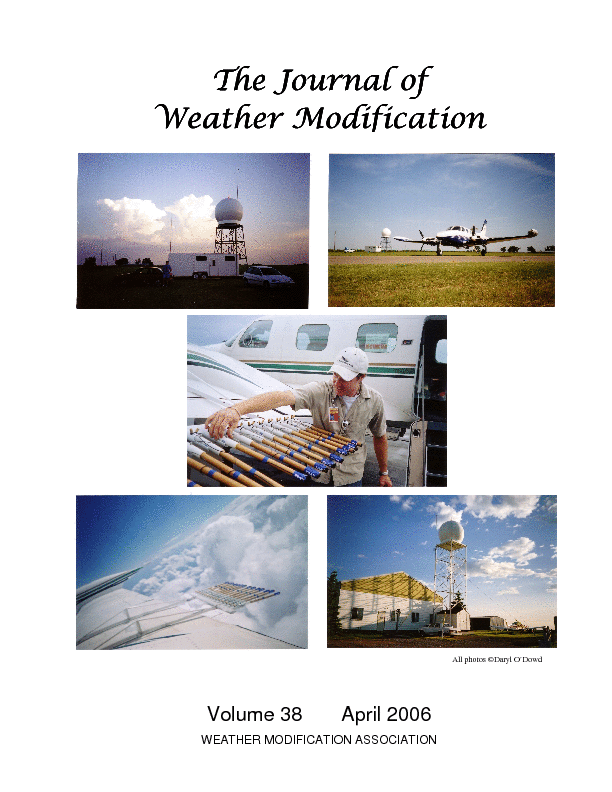Application of a Hydrologic Model to Assess the Effects of Cloud Seeding in the Walker River Basin of Nevada
DOI:
https://doi.org/10.54782/jwm.v38i1.216Abstract
The focus of this study is to use a physically-based, distributed hydrologic model to estimate the impacts of cloud seeding efforts on the streamflow generated within the areas of the Walker River Basin targeted by the Nevada seeding program. The hydrologic model is calibrated using GIS information, model default values, and manual calibration to fit observed streamflow at a USGS surface water station within the Walker River Basin. The calibrated model is then used in two case studies that are designed to simulate a non- seeded condition and a seeded condition with a 10% increase in precipitation on the five target areas. The results from the two modeling case studies indicate that the additional precipitation applied in the seeded case results in increases in evaporation and runoff from the target areas but does not significantly impact the storages of moisture in the groundwater and soil zone for all of the five target areas. The fraction of seeding-increased precipitation that resulted in streamflow varied from 49% to 89% among the different target areas. The remainder of the additional precipitation resulted in evapotranspiration from the target areas.Downloads
Issue
Section
Scientific Papers
License
Authors that submit papers for publication agree to the Journal’s copyright and publication terms. Authors retain copyright and grant the journal right of first publication with the work simultaneously licensed under a Creative Commons Attribution License that allows others to share the work with an acknowledgement of the manuscript’s authorship and initial publication in Journal of Weather Modification. Authors are able to enter into separate, additional contractual arrangements for the non-exclusive distribution of the journal’s published version of the work (e.g., post it to an institutional repository or publish it in a book), with an acknowledgement of its initial publication in the Journal of Weather Modification. Authors are permitted to post their work online (e.g., in institutional repositories or on their website) prior to and during the submission process to encourage productive exchanges and greater citation of the published article.
Articles are published online using restricted access for the first year. After the first year, articles are made freely available online. Immediate open access for an article may be obtained by the author paying an open access fee which is in addition to the normal page changes. Authors are expected to honor a page charge in order to support publication and distribution of the journal. After the author approves the gallery formatted version for publication, the Weather Modification Association’s Secretary will invoice the corresponding author for the page charges and payment is due within 30 days.
How to Cite
Application of a Hydrologic Model to Assess the Effects of Cloud Seeding in the Walker River Basin of Nevada. (2006). The Journal of Weather Modification, 38(1), 66-76. https://doi.org/10.54782/jwm.v38i1.216




